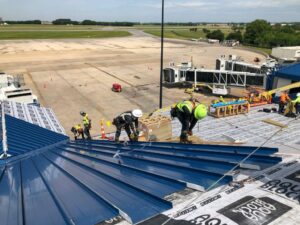Storm Causes Power Outages in Washington State
The recent bomb cyclone that swept through Washington state has left over half a million homes in the dark. With heavy rain, fierce winds, and significant snowfall, the storm caused trees to fall and take down power lines, including telephone poles with transformers. The result? Long-lasting power outages affecting not just homes, but entire communities.
Tree Falls and Disrupts Services
Across various neighborhoods, residents have reported seeing towering trees topple under the weight of the storm’s high winds. Some of those trees fell directly on power lines, causing immediate disruptions in electricity supply. Emergency crews have been working tirelessly to restore power, but with so many outages, it has proven to be a challenge.
Dependence on Electricity
In a world increasingly focused on electrification, the recent outages have sparked discussions on the risks of total dependence on electricity. Many households are now left wondering how they would cope with extended periods without power, especially during harsh winter temperatures when heating becomes essential. The transition to electric vehicles and electric heating systems is being promoted as a clear action plan for climate transition. However, as the current storm illustrated, this shift brings its own set of challenges.
Financial Burdens for Low-Income Households
For many families, investing in generators or battery backups might not be financially feasible. Low-income households could face difficult choices when power outages leave them without heat or light during the cold months. The situation raises questions about whether communities can come together to find a collective solution to reduce the risks of outages.
Hardening the Grid
One suggestion is to “harden” the electric grid, which involves upgrading infrastructure and possibly burying power lines to protect them from extreme weather. While this method can enhance reliability, it is a costly undertaking, often requiring additional charges on electricity bills or new bond levies. Many residents are grappling with the reality of how these improvements can be financed and whether such measures would be worth the investment.
Nationwide Resilience Efforts
The issue of grid resilience is not unique to Washington state; it is a nationwide concern that is becoming increasingly relevant as climate change contributes to more frequent and severe storms. The United States Department of Energy has noted that the current power distribution system has over 5.5 million line-miles, with numerous power poles susceptible to damage from severe weather. Consequently, every year, a significant number of outages occur due to weather-related events.
Underground Power Lines: Pros and Cons
While undergrounding power lines could prevent outages, it also presents some challenges. Buried lines can be more expensive to install and harder to access for repairs. They are better suited for areas prone to frequent outages and where the terrain allows for easy installation. Recent data shows that some communities are open to supporting initiatives for undergrounding as they recognize the benefits it can provide.
Government Support and Local Initiatives
There is federal support available, with $10.5 billion allocated through the 2021 Bipartisan Infrastructure Law aimed at enhancing grid resilience. However, local governments and utility companies will play a key role in implementing grid improvements. In Washington, for instance, Puget Sound Energy has indicated that undergrounding power lines would require shared costs between the utility and local communities.
Time for Action
As Washington residents tackle the challenges posed by storms and power outages, it is crucial that discussions surrounding the resilience of the grid become a priority. With the potential for future climate events to exacerbate outages, local communities may need to consider increased investment in undergrounding efforts to ensure their electrical infrastructure is ready for whatever Mother Nature throws their way.
In the wake of the recent storm, one thing is clear: communities must come together to address the risks associated with power outages and find ways to support each other through both practical solutions and long-term planning.








